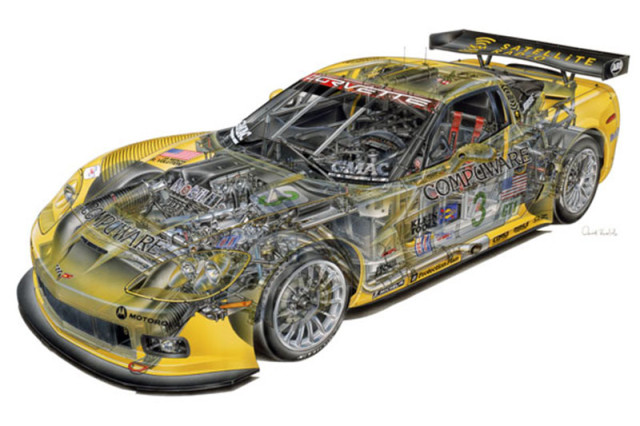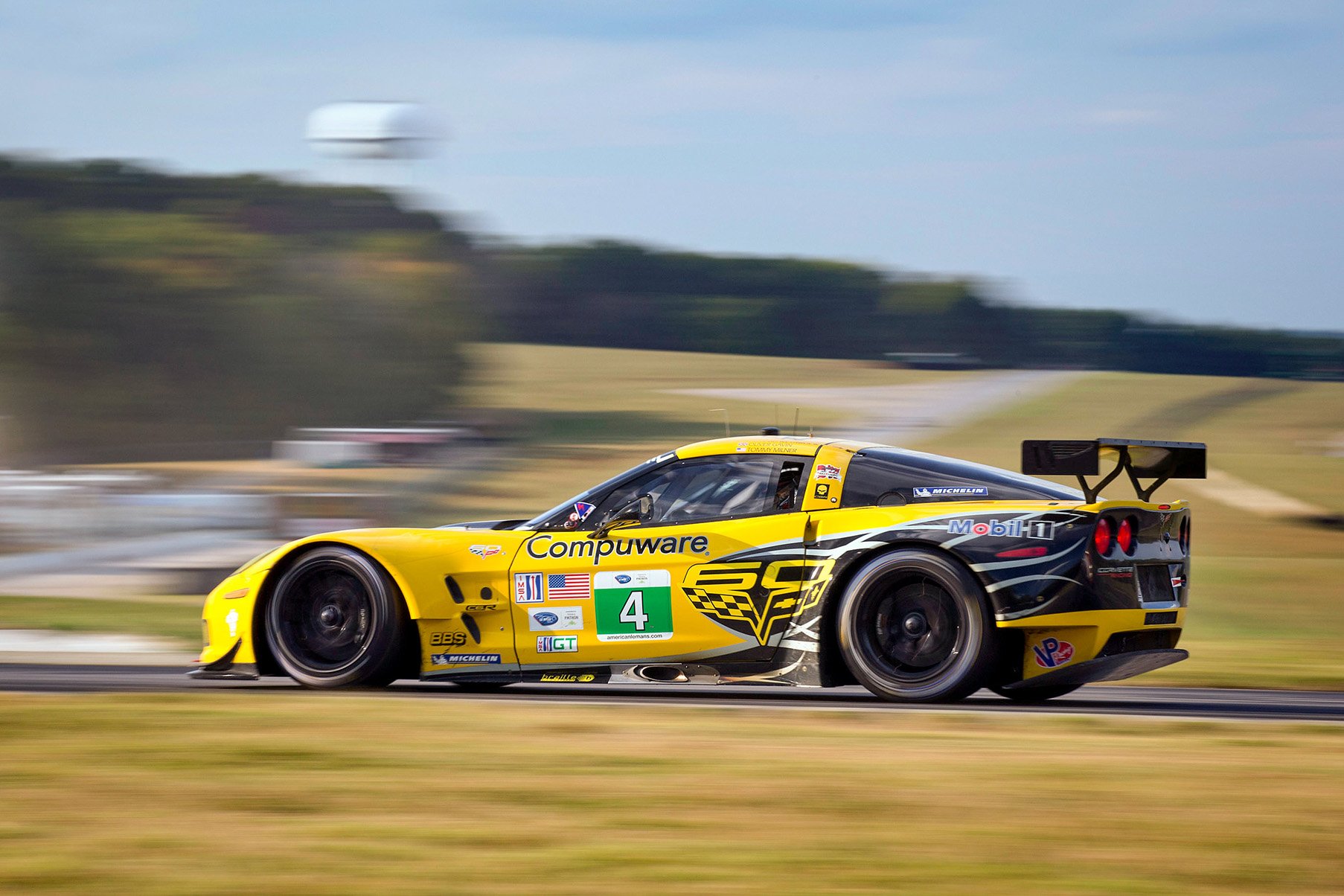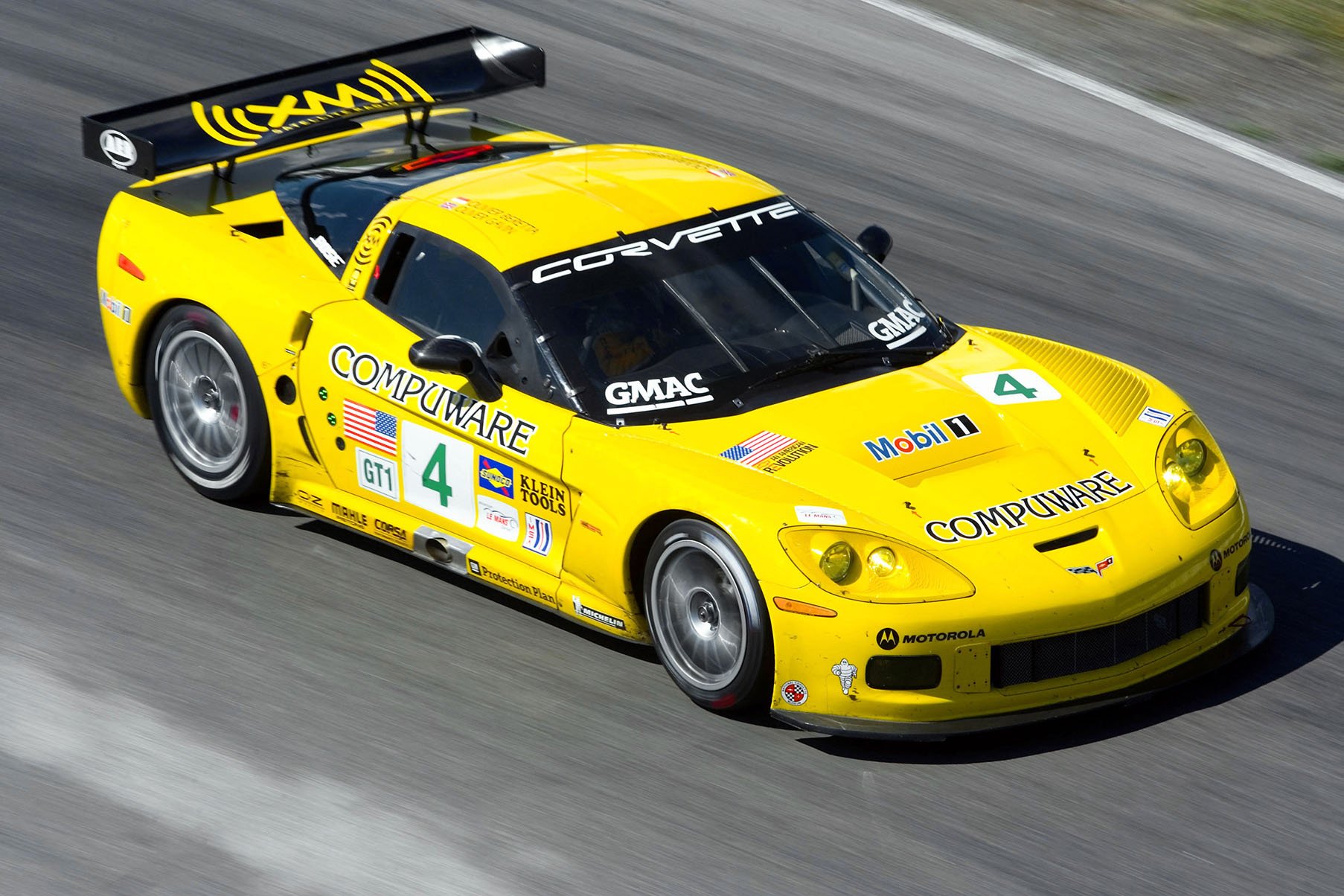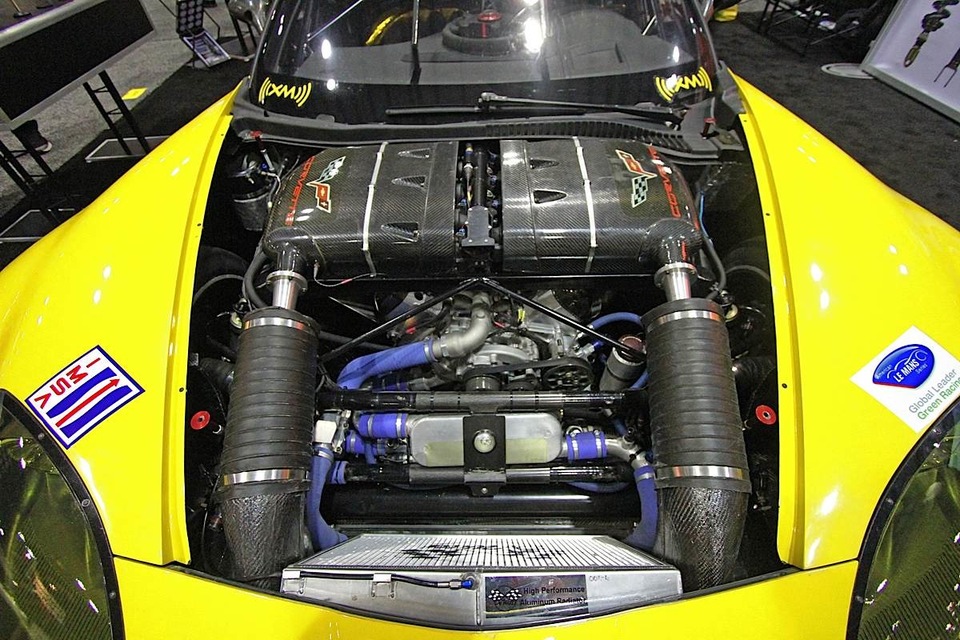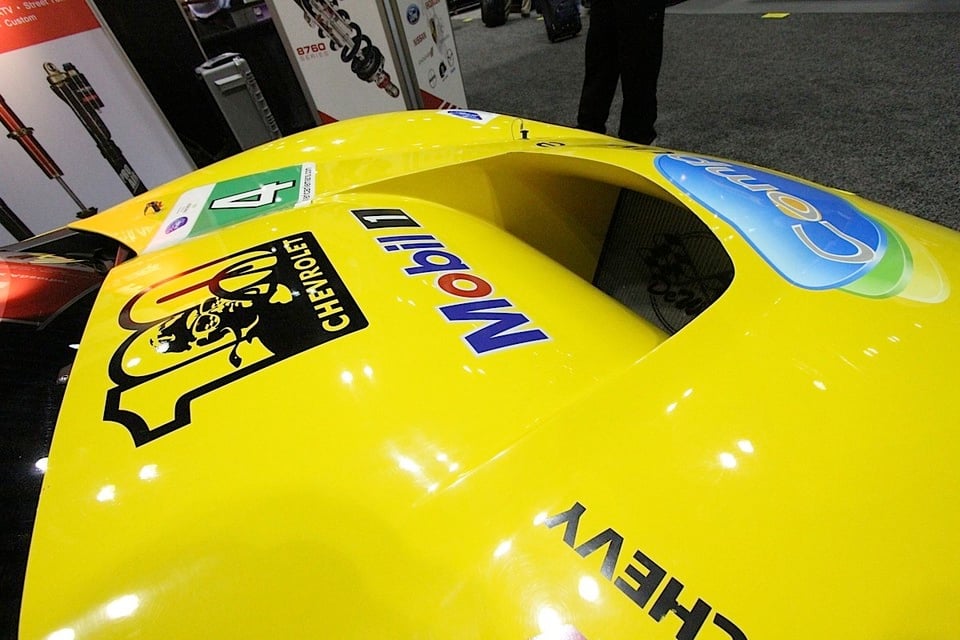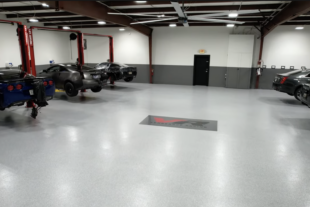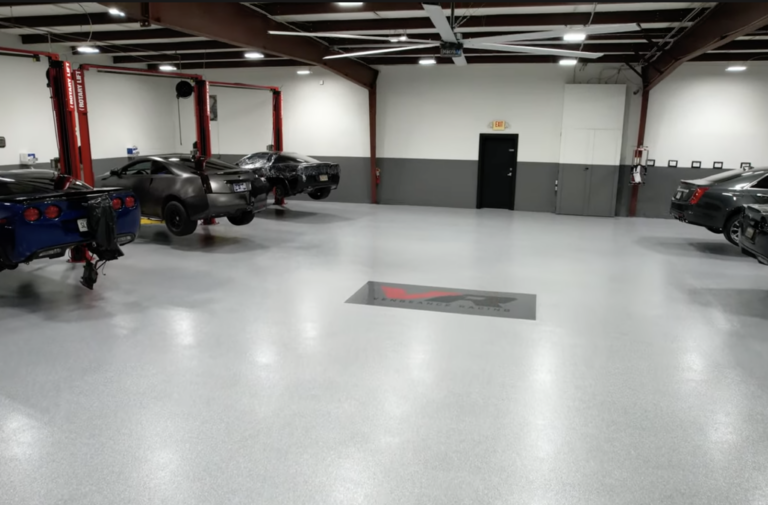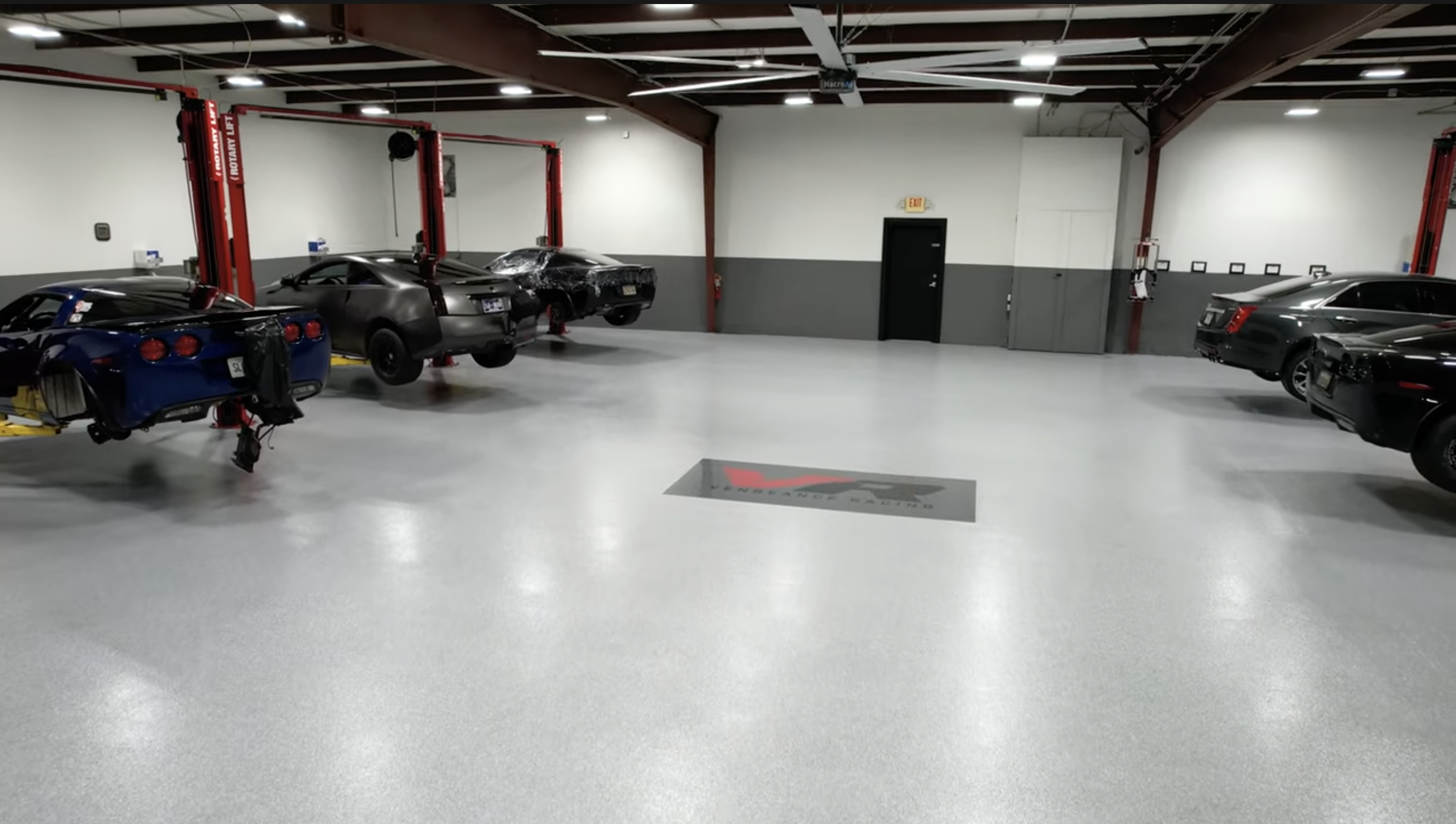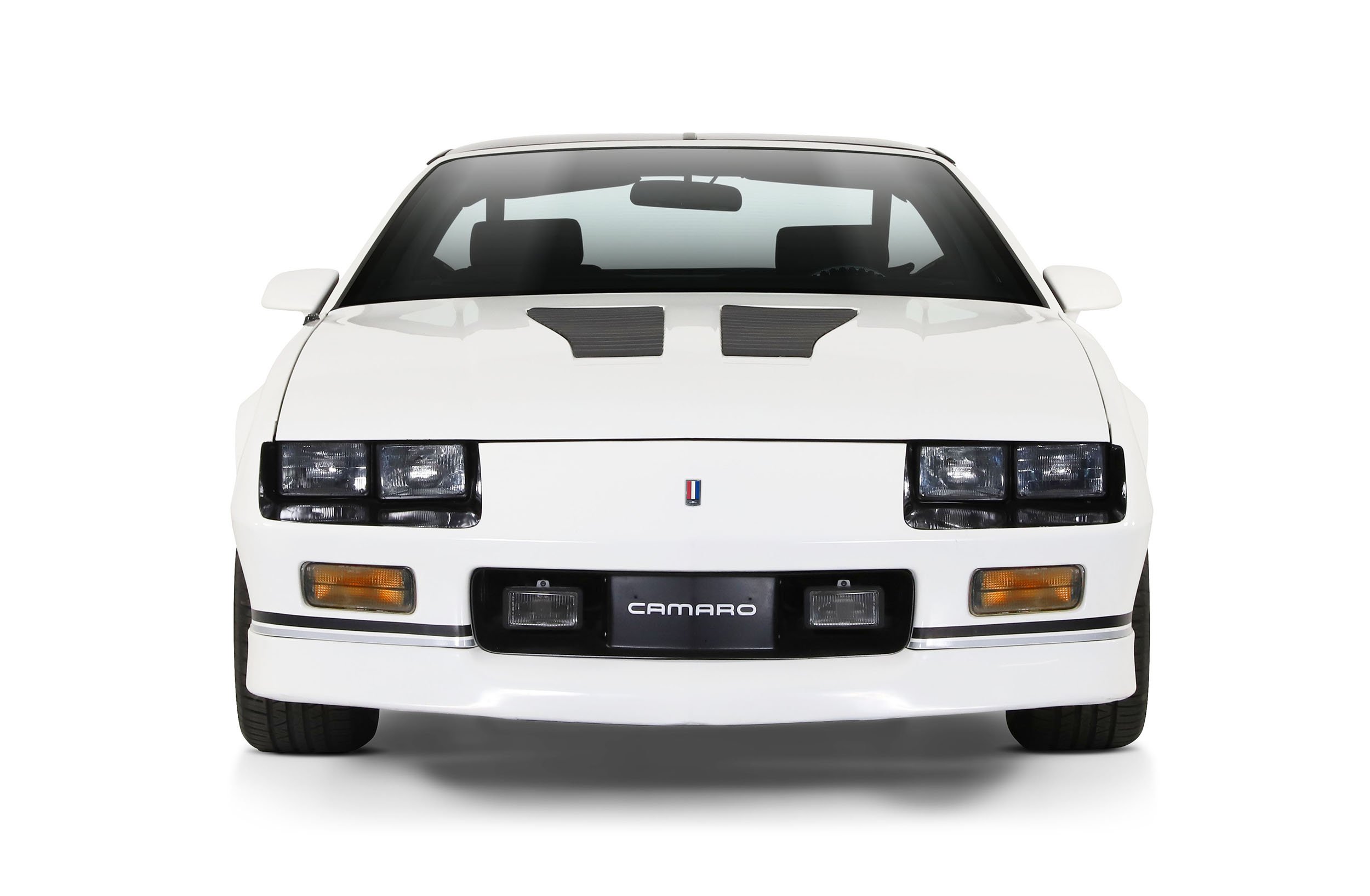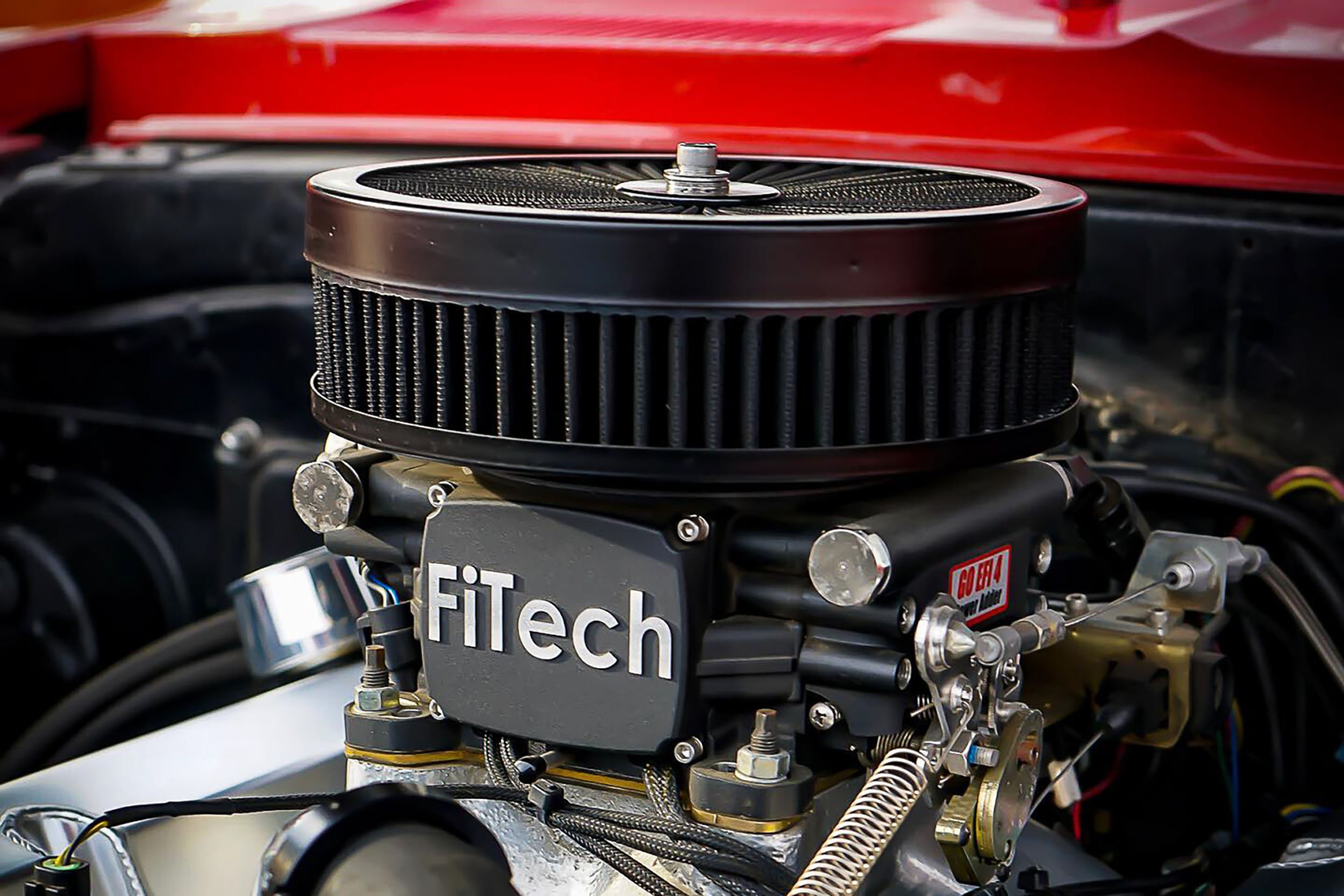No matter how track-focused a manufacturer may claim their vehicle is, if it’s a road-legal production car, it’s compromised in a number of ways. Emissions regulations, fuel economy considerations, safety requirements and concessions to drivability are obligatory factors in production vehicle design today, and while these factors make our road cars safer, more environmentally friendly and easier to drive on public roads, they also tend to limit a vehicle’s capability by design.
But by and large, these constraints do not apply to purpose-built race cars. When it comes to road racing, there’s no need to consider ride height to clear speed bumps, the general ease of ingress and egress, how good the stereo sounds, or NVH (noise, vibration, and harshness) limits – the fundamental goal is to make the car as fast and capable as possible while remaining reliable enough to complete a particular event with minimal need for pit stops.
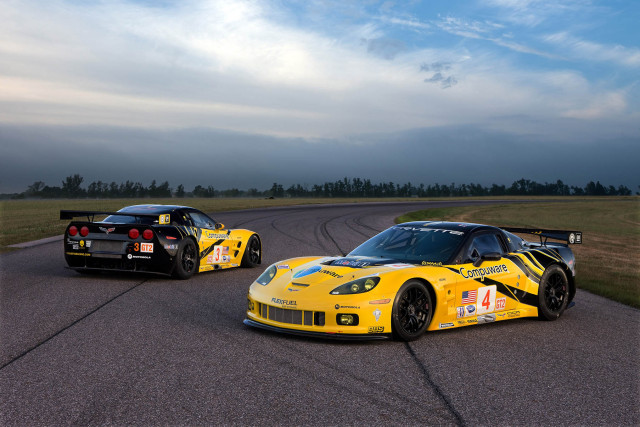
The C6.R’s development can be divided into two distinct variants – the GT1 car, powered by a 590hp, 7.0-liter Katech-built V8, and the GT2 car seen here that followed, which used a motor destroked to 5.5-liters per class rules. Based on the visual design of the Corvette ZR1 rather than the Z06 template used with the GT1 car, the GT2-class C6.R made its racing debut in the American Le Mans Series at the Mid-Ohio Sports Car Course race on August 6th, 2009, where factory drivers Johnny O’Connell and Jan Magnussen piloted one of the Corvette Racing entries to a second place finish. Image: GM
And while we tend to think of race cars as tube chassis creations that share virtually nothing with their production counterparts (see the modern Trans Am and NASCAR racing series for prime examples), the Corvette Racing program’s GT class entries – while extensively modified for motorsport – share more in common with road-going Corvettes than you might think.
Although there are significant differences between the road-going C6 and the C6.R, development of the two sports cars was intrinsically tied to one another according to Tadge Juechter, the chief engineer between the C6 Corvette. “Simply put, without Corvette Racing, there would not be a Corvette Z06, much less the ZR1. And, without the foundation of the Corvette C6, Z06 and ZR1, the Corvette Racing team would not be the dominant presence in production-based racing.”
One of General Motors’ official racing teams since 1999, these C6.R race cars are designed and built in cooperation with Chevrolet by Pratt and Miller, an engineering and fabrication company based out of Michigan that’s been instrumental in GM’s motorsport efforts since they got involved in the development of the C5-generation race car. After joining forces with Pratt and Miller, and the Corvette Racing team has seen an incredible number of racing victories, which include no less than eight class victories at the 24 Hours of Le Mans.
With six race seasons under their belt developing the C5.R for the Corvette Racing team, Pratt and Miller already had a winning combination on their hands when it came time for the C6.R to succeed it for the 2005 race season. While still in the design phase, GM engineers worked directly with their factory race team to determine the best ways to improve the Corvette's competitiveness on a fundamental design level, which is responsible in part for the C6 losing the pop-up headlights of generations past. Images: GM
Among the number of production-based race cars Pratt and Miller has helped GM develop – which includes the Cadillac CTS-V, ATS-V and Camaro road racing cars – the Corvette C6.R is perhaps the most distinguished and fully developed model to date, and continues to be campaigned by privateer teams today despite being succeeded by the C7.R in 2014.
And for those with the means and fortitude to do so, would-be privateer race teams can snatch up these world-class racing machines for their own motorsport aspirations when they occasionally come up for sale, now that the C7.R is Pratt and Miller’s latest and greatest. Let’s take a closer look at what makes a Pratt and Miller C6.R so special.
Chassis
By the time the C5.R was ready to be put out to pasture after 2004 race season, Corvette Racing and Pratt and Miller had honed the design into a proven world-class GT race car, capturing an overall victory at the 24 Hours of Daytona, three class wins at the 24 Hours of Le Mans, and no less than 31 class victories in the American Le Mans Series. As such, the C6.R is more of an evolution of the C5.R chassis rather than a clean-sheet redesign.
Developed alongside the C6 road car (and, more specifically the road-going C6 Corvette Z06), the C6.R shares much of its overall framework with the production car. Engineers working on the road-going C6 Corvette reached out to the race team during its conceptual phase, asking for a list of design elements to consider while developing the new generation of the Corvette.
According to C6.R racing program manager Doug Fehan, his team responded with three specific requests. “The design staff came to us and asked what they could do to make a better race car.” Fehan said. The team asked for a single air intake at the front of the car rather than the split intakes on the C5, the replacement of the pop-up headlight design with fixed units, and to add additional downforce to the car by recontouring the Corvette’s profile. “The C6 has a completely different angle in the roof and down the back,” Fehan noted to Racecar Engineering in 2005.
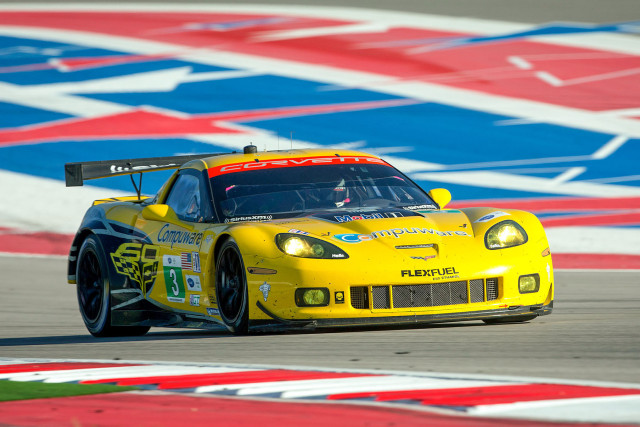
The C6.R seen here was driven to victory by Antonio Garcia and Jan Magnussen at the September 21, 2013 GT class race of the American Le Mans Series at Circuit of The Americas in Austin, Texas – one of the numerous wins the C6.R would accumulate in the series over the years, along with several championships. Image: GM
These tweaks resulted in improvements in both downforce and aerodynamic drag, and the trade-offs inherent to each could be adjusted to suit the needs of a particular race and track.
Like the road-going C6, the C6.R made more extensive use of lightweight aluminum, leading to a curb weight of roughly 2750 pounds, which makes the C6.R about four hundred pounds lighter than the road-going C6 Z06, despite the additional aero bits and on-board safety equipment.
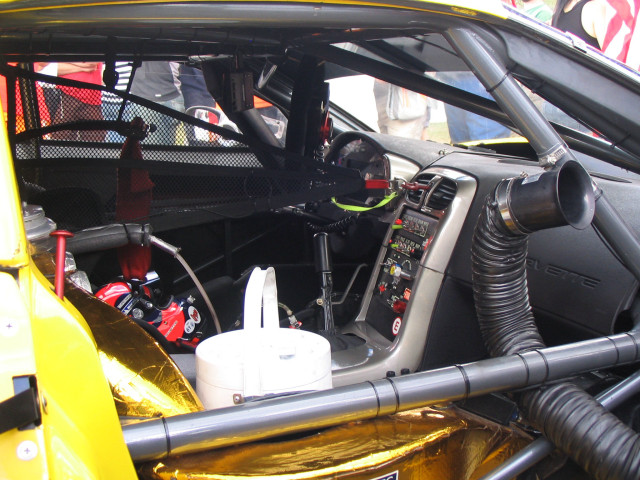
The C6.R’s cockpit features a number of innovations over its predecessor, including a roof-mounted display that serves as a rear view mirror, as there is no rear window in the C6.R. Class rules required the use of an air conditioning system to combat drive fatigue in endurance racing, so the C6.R uses a compressor pulled from the Cadillac SRX parts bin that’s driven off the propshaft. The C6.R uses a non-adjustable seat and a fixed-position pedal box. To accommodate driver swaps, the Corvette Racing team keeps it simple with seat pads that can be removed or added when needed. Image: Kevin Field, Flickr
Like the C5.R, the C6.R lacked a rear window due to the need for structural rigidity as well as space for the fuel tanks behind the cockpit – drivers wouldn’t have been able to see much with that giant rear wing in the way, anyway.
But unlike its predecessor, the C6.R incorporated a camera into the rear bumper which fed its footage to a display mounted on the roof of the cockpit, greatly enhancing rear visibility for the team’s race drivers, who’d previously had to rely on just the side mirrors.
Powertrain
Two main iterations of the C6.R were built – one for GT1 class racing and another for GT2 class. Along with a more aggressive aero kit, the GT1 car utilized carbon ceramic brakes and had a 7.0-liter LS7.R under the hood, while the GT2 used a 6.0-liter mill for the second half of the 2009 race season and then a 5.5-liter V8 from 2010 through the 2013 race season per class rules. Power is routed to the rear wheels by way of a sequential Xtrac six-speed transmission.
While the GT1 car's naturally aspirated 7.0-liter V8 (dubbed the LS7.R) more closely followed the design of the production LS engines than in years past, it's far from being a production piece. These engines were developed specifically for the C6.R by Katech Racing and developed 590 horsepower even with race class-mandated restrictiors in place. In 2007, they incorporated variable displacement into the motor's design, which allowed the ECU to deactivate half the cylinders of the motor during caution periods when full performance was not needed. Like in the production car, this technology saved fuel, and in endurance racing that equates to less pit stops throughout a race event.
Like the C5.R, the 7.0 power plant and its reduced displacement counterparts were built for Corvette Racing by Katech Engines out of Clinton Township, Michigan. Using a heavy-duty, siamesed-bore cylinder block and CNC-ported competition cylinder heads, the 7.0-liter motor develops 590 horsepower, though the output potential is significantly limited by race restrictions, similar to those used in NASCAR.
Due to its durability and performance, the LS7.R would go on to win Race Engine of the Year in 2006, awarded by Race Engine Technology magazine. “It is doubtful if ever have so many experts voted for a competition engine award,” Race Engine Technology editor Ian Bamsey said at the time. “Each of the category winners was a genuine selection by an impressive jury of peers.”
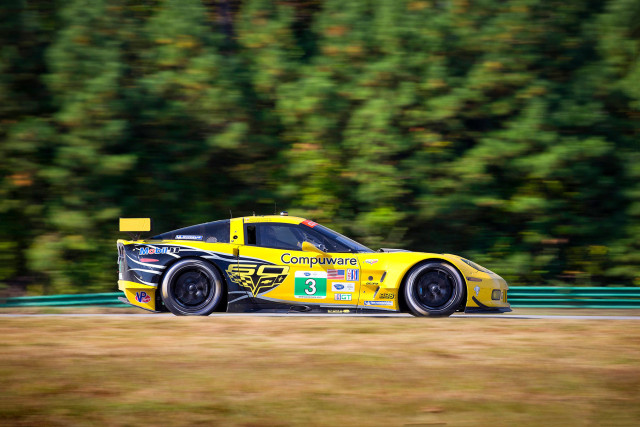
Rather than the traditional Tremec six-speed manual transmission found in the road-going Z06 and a ZR1, the C6.R uses an Xtrac six-speed sequential transmission, which does not require the driver to lift off the throttle between up shifts, which are performed by simply pulling back on the lever. In 2011 the team would switch over to a paddle-shifted setup. Image: GM
In 2009, Corvette Racing would bow out of GT1 class racing to shift their focus to GT2. This switch in turn required the motor to eventually be destroked to 5.5-liters per class rules, and mandated twin 28.8-mm restrictors keep the motor’s output held back to 470 horsepower in the interest of parity with the rest of the class in which it competed.
Motorsport Legacy
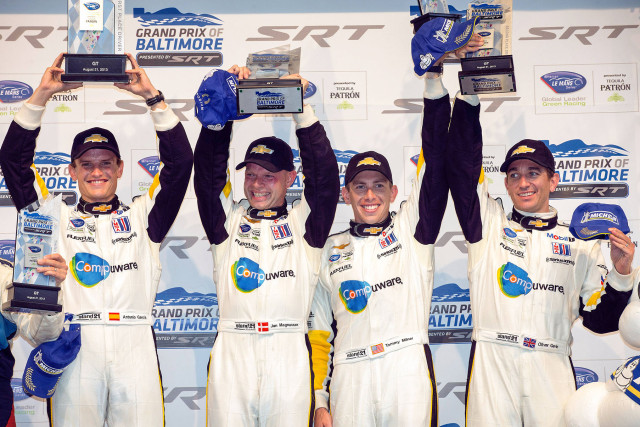
From left to right: Antonio Garcia and Jan Magnussen celebrate their victory in the GT Class of the Grand Prix of Baltimore in Baltimore, Maryland on August 31st, 2013. Team mates Tommy Milner and Oliver Gavin stand alongisde them celebrating their second place finish. Image: GM
While more than half a dozen privateer teams have campaigned the C6.R over the years, GM’s factory-backed effort with Corvette Racing is enough to solidify the C6.R’s impressive racing legacy on its own.
Right from the outset, the Corvette Racing C6.R proved to be a dominant force in motorsport, racking up 39 wins in the GT1 class, multiple championships from 2005-2008, 12 straight wins from 2005 to 2006, and 25 consecutive wins from 2007-2009.
Using a newly developed 6.0-liter motor in mid-2009 for GT2 class racing, the updated C6.R (which now took some styling cues from the then-new C6 ZR1 road car) took a podium spot on its first outing at Mid-Ohio Sports Car Course with factory drivers Jan Magnussen and Johnny O’Connell at the helm.
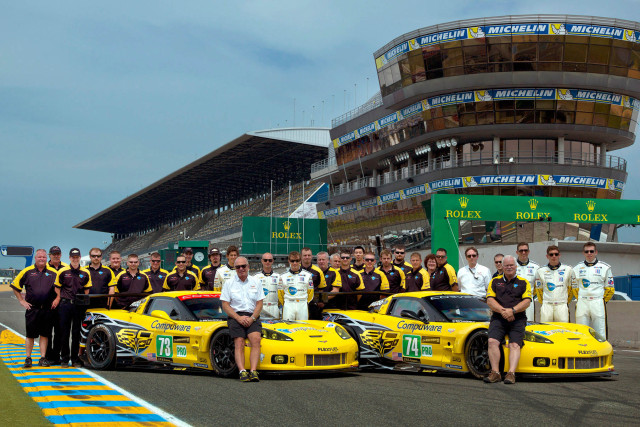
Although the early days after the Corvette Racing team switched from GT1 to GT2 class racing were inconsistent, by the closing year of the C6.R’s factory-backed effort they were once again fierce competitors, securing the ALMS GT championship with five GT victories, including the 12 Hours of Sebring. Image: GM
For 2010, displacement would be reduced to 5.5-liters in order to comply with new GT2 class rules. After some initial teething issues with the new mechanicals, the Corvette Racing team would again become a force to be reckoned with on the race track, securing GTE-Pro class victory at the 2011 24 Hours of Le Mans and coming back strong in the 2012 season, with Corvette Racing clenching the 2012 GT Team’s and Driver’s championship with four class wins. The C6.R would find racing success yet again during its final year as a factory effort, winning the 2013 ALMS GT championships with five GT victories along the way.
Although Corvette Racing has since replaced the C6.R with the C7.R, a number of privateer teams continue to race with C6.R around the world today.



